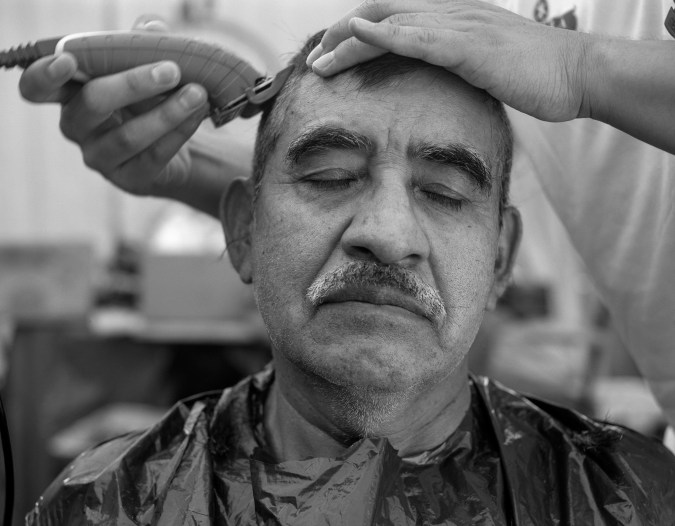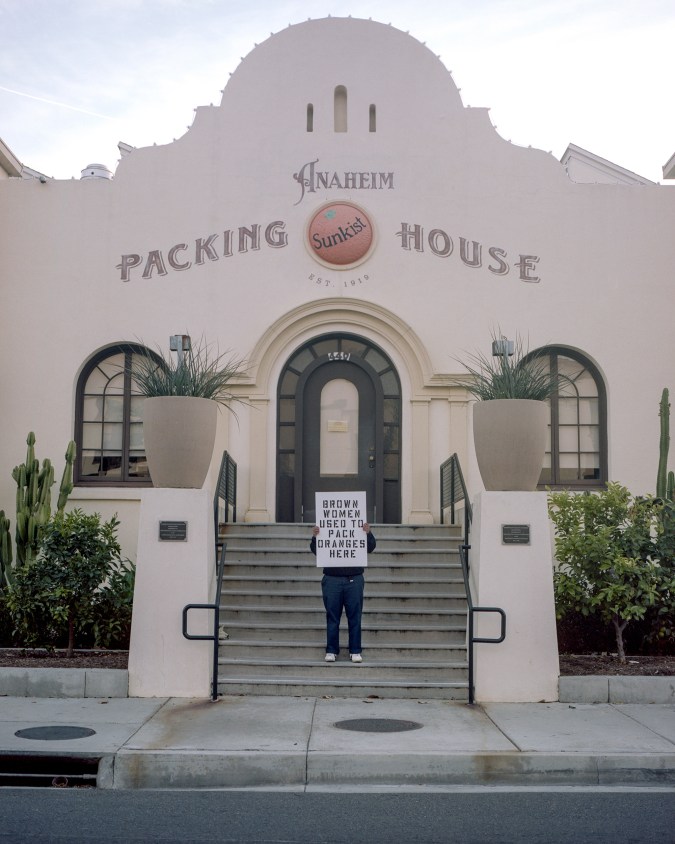As we slowly re-enter the less digital world, how can we feel close to art in a frontier as vast, commodifying and, frankly, distracting as the internet? In the virtual exhibition, Negotiated Frontiers,William Camargo, artist-in-residence at The Latinx Project (TLP) and curator Dalina A. Perdomo Álvarez attempt to answer that question. The two somehow cultivate intimacy on the screens that have mediated the past year by reframing collective storytelling through Camargo’s documentation of community beneath and beyond Southern California’s harsh and soft sun.
The exhibition’s name comes from Dr. Jennifer A. González’s essay, “Negotiated Frontiers: Contemporary Chicano Photography.” In it, she writes, “To have an image implies the rights of ownership. To be with an image implies a relation of cooperation, community.” 26 years later, Negotiated Frontiers’ blueprint for that cooperation and more genuinely accessible art spaces partly stems from actively discussing photography’s tokenizing gaze and the erasure of BIPOC perspectives across the art world.
We have to be careful to not treat representation as a goal, but rather as a tool to use in the path toward justice.
“Discussions of representation in art spaces cannot leave out matters of proper compensation, respect, and ownership, or they will just turn into another form of exploitation in disguise (that makes an institution look good on the surface),” Perdomo Álvarez tells Remezcla, “‘Latinx art’ is a tool to discuss the intersections of the many experiences of people of Latin American heritage, and the goal is not a generalized ‘Latinx representation.’”

“We have to be careful to not treat representation as a goal, but rather as a tool to use in the path toward justice,” the curator expands. To reimagine classic modes of representation, Camargo studies and plays with them. Negotiated Frontiers opens with images of the artist running away from the camera in their works partly based on As Far As I Could Get Californian photographer John Divola’s “canonical” 1990s’ series. While Divola runs from the viewer in the desert, in works like “As Close As I Can Get To the Liquor Store From the Swapmeet Parking Lot In 10 Seconds” Camargo sprints through palm tree-spotted alleys and parking lots so eerily flat that they accentuate the human surveillance of the landscape. As Camargo noted after Ahmaud Arbery’s murder, Divola’s work captures the violently carefree privilege of running while white and not being viewed as inherently suspicious.

The goal is not a generalized ‘Latinx representation.’
Part of the Aperture Foundation and Silver Eye-recognized educator’s approach to displacing the ahistorical vanilla scenes that dominate galleries is immersing us in Anaheim, CA, where they grew up and currently serve as Cultural Commissioner. “Working with my own family archive and the [Instagram] I run led me to think of all the history communities of color have in cities and how they often go untold,” Camargo tells Remezcla of their community-sourced work on @latinx_diaspora_archives. Their project Origins & Displacements conserves histories through the eyes of a neighbor resisting gentrification by memorializing the Brown women who worked at the Sunkist Packing House.

“[Digitally] there can be a wider distribution of this local narrative that is quite universal in this white supremacist country,” Camargo tells Remezcla. Beyond circulating these counter-narratives online, TLP’s work within this digital frontier is peak rasquachismo–a playful Chicanx sensibility rooted in working with what you have. Rasquachismo’s definition prefaces images of the artist covered in household assemblages in their newest, characteristically witty and (literally, in this case) weighty series All That I Can Carry.
For the artist who is experiencing a season of self-doubt or is both anxious to create yet too anxious to create, Negotiated Frontiers’ inclusion of family archives and quotations pulled from the research behind the exhibition is comforting and refreshing. Placing these references alongside Camargo’s art reminds us of how revisiting family photo albums at the kitchen table are just as significant as what is traditionally considered fine art.

“I don’t currently have an answer on where we go from here concerning the idea of a photography ‘canon,’” Perdomo Álvarez says, “but I hope that by including the texts we read and learn from, we can show what the process of figuring it out together looks like.”
This exhibition runs until May 14. You can support The Latinx Project and apply for their artist-in-residency program here.




